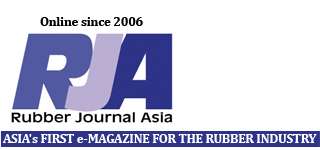 STIFF competition looms over. The natural rubber latex (NRL) industry has grown tremendously, especially during the last 25 years. The industry is driven by the gloves market that has been responding to increased demand created by the heightened awareness for improved hygiene management. According to No Dock Moung from the Singapore-based International Rubber Study Group, over the next decade, this need will remain the central driver for the industry. “However, the industry will face stiff challenges as further developments will be made by nitrile (NBRL) gloves in its physical/chemical properties,” he added.
STIFF competition looms over. The natural rubber latex (NRL) industry has grown tremendously, especially during the last 25 years. The industry is driven by the gloves market that has been responding to increased demand created by the heightened awareness for improved hygiene management. According to No Dock Moung from the Singapore-based International Rubber Study Group, over the next decade, this need will remain the central driver for the industry. “However, the industry will face stiff challenges as further developments will be made by nitrile (NBRL) gloves in its physical/chemical properties,” he added.
Traditionally, the cost of NBRL has been higher than NRL but in the past ten years, the cost advantage has been shared between the two, Moung explained. Over the same period, there has been an almost steady decline in the market share of NR latex gloves. Moung speculates that developments have been made in the physical/chemical properties of the NBRL glove market improving its attractiveness over NRL gloves.
Turning the tide with guayule
Some rubber manufacturers, meanwhile, are taking a wait-and-see approach. According to some participants at the conference, for guayule to be a direct substitute for hevea it has to either perform the same functions at a lower cost or perform better at the same cost.
In line with the industry’s growing interest on guayule, Dr Katrina Cornish of Ohio State University presented in the conference the latest findings of her research that identified the contribution of several biobased
components to the properties and performance of latex products. Ten biobased materials were used including vegetable waste, eggshell calcium carbonate, cotton fibres, guayule bark bagasse, guayule bark baggase
without resin and dandelion fluff were used. Among the ten biobased materials, guayule appeared to present the best properties that can be used for a wide variety of medical device applications and also has performance that is comparable if not better than hevea latex. Aside from lessening NR dependence, latex allergies to NRL have also led to the development of guayule.
To read the full article, Click here to launch the digital viewer
